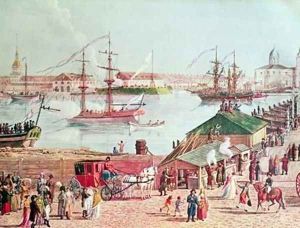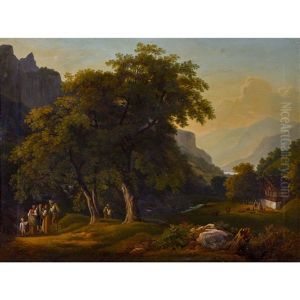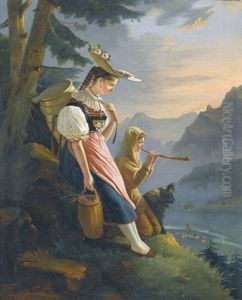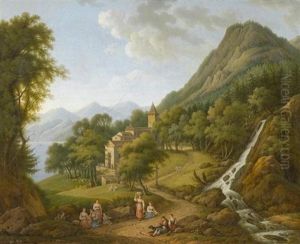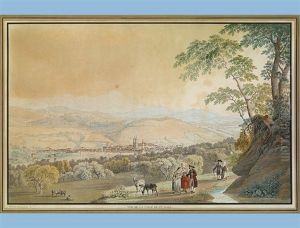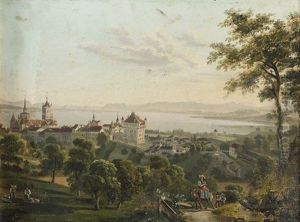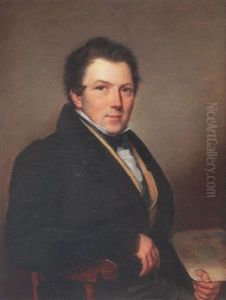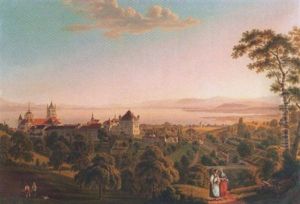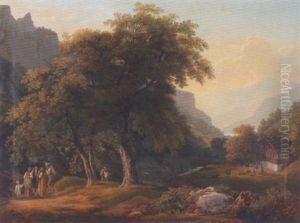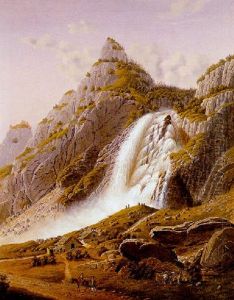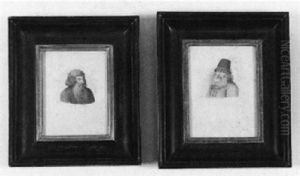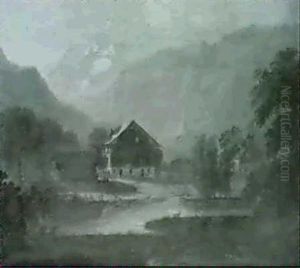Gabriel Ludwig Lory Paintings
Gabriel Ludwig Lory was a Swiss painter and watercolorist who is best remembered for his captivating landscapes and city views that captured the majesty of the Swiss scenery during the late 18th and early 19th centuries. Born on November 11, 1763, in Bern, Switzerland, Lory came from an artistic family; his father, Gabriel Lory the Elder, was also a painter, and it was under his guidance that the younger Lory began his artistic education.
Lory the Younger was particularly adept at using watercolors, a medium that allowed him to infuse his works with a remarkable sense of atmosphere and light. His works often depicted the Alps and the picturesque landscapes of Switzerland, capturing both the grandeur of nature and the quaint charm of Swiss rural life. His travels throughout Switzerland and his keen eye for detail allowed him to create works that were not only aesthetically pleasing but also of documentary value, as they preserved the look of Swiss towns and landscapes during his lifetime.
Early in his career, Gabriel Ludwig Lory worked in his father's studio, where they collaborated on various projects. In 1787, he embarked on a study trip to Paris, which further influenced his artistic development. Upon his return, he settled in Bern and continued to work and teach. His reputation grew, and by the early 19th century, he was receiving significant commissions, including requests for illustrative work for travel books. This period saw the creation of some of his most notable works, including a series of views of the Rhine Falls and the famous panorama of the city of Bern.
Lory's work is characterized by its detailed finish and the clarity of his colors, which set his watercolors apart from those of his contemporaries. He was also skilled in the art of engraving and etching, and his prints contributed to his fame, allowing a wider audience to appreciate the beauty of the Swiss landscape.
Gabriel Ludwig Lory passed away on September 1, 1840, in Bern. Today, his works are held in high regard and can be found in various museums and private collections, treasured for their historical value and their enduring beauty as works of art.
